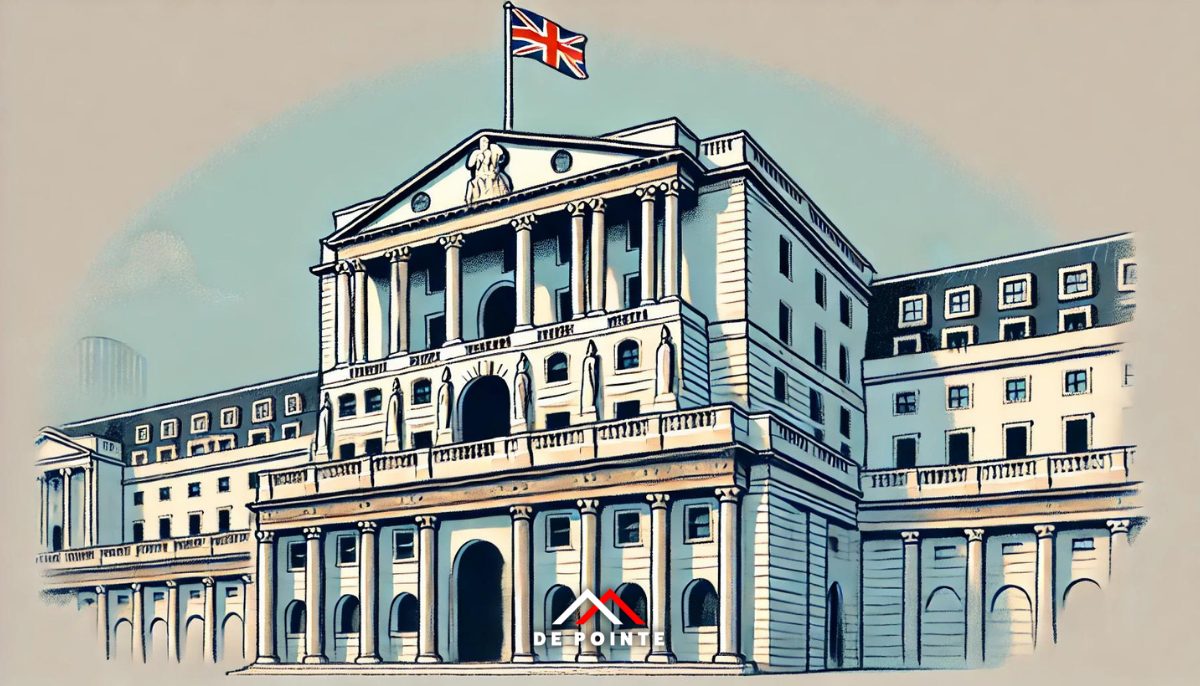Article

On February 6, 2025, the Bank of England (BoE) decided to reduce its base interest rate from 4.75% to 4.5%. This marks the third rate cut in just six months and is a clear indication that the central bank is attempting to address sluggish economic growth and persistent inflationary pressures. The decision is likely to have widespread implications across various sectors of the UK economy, as well as in the global market. In this blog post, we’ll explore how this recent reduction in bank interest rates might affect key industries such as housing, finance, retail, technology, and global trade, and what it means for investors looking to adapt to the changing landscape.
Understanding the Impact of Bank Interest Rates
Bank interest rates are a powerful tool used by central banks like the BoE to influence economic activity. When the BoE lowers interest rates, it aims to make borrowing cheaper, encouraging businesses and consumers to spend and invest more. However, the effects of this policy move can ripple outwards across multiple sectors of the economy, creating both opportunities and challenges for businesses and investors alike.
1. Housing Market: A Potential Boost for Property Investors
The housing market often reacts quickly to changes in bank interest rates. When interest rates are cut, mortgages become more affordable, encouraging first-time buyers and property investors to act. Lower borrowing costs allow more people to enter the housing market, leading to higher property values and increased activity across residential and commercial real estate.
For investors, this means potential opportunities in real estate, as lower rates can drive demand for residential properties and rental units. Real estate developers may also find it easier to secure financing for new projects, which could spur construction activity and lead to higher returns for property investors. However, with increased demand comes the risk of property bubbles in certain areas, so investors must tread carefully and conduct thorough due diligence before making any investment decisions.
2. Financial Sector: Adjusting Lending and Investment Strategies
The financial sector is one of the most directly impacted by changes in interest rates. Lower interest rates generally lead to lower borrowing costs for consumers and businesses, which can increase the volume of loans issued. This is particularly beneficial for retail banks, which may see increased demand for mortgages, personal loans, and business loans.
However, lower interest rates also tend to reduce the yield on savings accounts, bonds, and other fixed-income investments, which could be a challenge for banks looking to generate profits from these products. As a result, investors may turn to alternative asset classes, such as equities or real estate, to earn higher returns. For investment firms, this presents an opportunity to advise clients on diversifying their portfolios into alternative investments, such as gold, art, and other tangible assets, which have historically performed well during spells of low interest rates.
3. Retail Sector: Boosting Consumer Spending
The retail sector is another area where interest rate cuts can have a noticeable impact. As borrowing costs decrease, consumers often have more disposable income to spend on goods and services. Personal loans and credit card interest rates tend to fall alongside cuts in the base rate, encouraging higher consumer spending.
With more money to spend, shoppers are more likely to make larger purchases, from home appliances to luxury goods, which can give retailers a boost in the short term. However, the BoE’s projections suggest that inflation will rise to 3.7% by the third quarter of 2025, which may reduce some of the benefits of lower interest rates. Even with more disposable income, higher prices could curtail consumer spending, particularly for non-essential items.
Retailers that offer financing options or interest-free payment plans could stand to gain the most from this shift in consumer behaviour. In addition, e-commerce businesses that adapt to consumers’ changing purchasing habits could see significant growth as more people shop online.
4. Technology Sector: Increased Investment Potential
For the technology sector, the reduction in interest rates could signal a period of growth. Tech companies, especially start-ups, often rely on external capital to fund their expansion, research, and innovation. With borrowing costs lower, it’s easier for these companies to secure financing at favourable terms, which could lead to more innovation and quicker scaling of businesses.
Moreover, the overall risk appetite in the market could increase as investors seek high-growth opportunities. Technology stocks, particularly those in the fields of artificial intelligence, fintech, and green technologies, could see higher valuations as investors seek higher returns from these innovative sectors.
However, the BoE’s decision to reduce interest rates in response to slower-than-expected economic growth could signal that underlying economic conditions are less than ideal. This means that while the technology sector could benefit from increased investment, companies need to manage their growth strategies carefully to avoid over-leveraging or spreading themselves too thin.
5. Global Trade: Navigating Uncertainties
While the BoE’s decision to cut interest rates primarily affects the UK economy, its impact is likely to reverberate globally. Lower interest rates in the UK can weaken the British pound, which might make UK exports more attractive to foreign buyers. This could benefit export-driven industries, particularly in sectors such as manufacturing, agriculture, and high-end goods.
On the flip side, global trade remains uncertain, with potential trade tariffs from the United States and other economic disruptions looming on the horizon. UK businesses that rely on international trade should closely monitor these factors and consider hedging strategies to mitigate the risks associated with currency fluctuations and shifting trade policies.
6. Gold and Alternative Investments: A Safe Haven in Uncertain Times
In times of economic uncertainty, investors often turn to tangible assets like gold, art, and other alternative investments as a hedge against inflation and currency fluctuations. With the BoE’s decision to cut interest rates and its projection of higher inflation, we may see increased demand for gold as a safe haven asset.
For investors, now may be the perfect time to diversify their portfolios with alternative investments. Gold, in particular, has a long history of holding its value during periods of economic volatility. At De Pointe Research, we’ve seen growing interest in art and other non-correlated assets as investors seek ways to preserve and grow their wealth in uncertain times.
The Bank of England’s recent decision to cut interest rates to 4.5% marks a significant shift in the economic landscape. While this move aims to stimulate growth across the UK economy, it also brings both opportunities and challenges for businesses and investors. Sectors such as real estate, finance, retail, and technology could see substantial benefits, but careful monitoring is essential to navigating potential risks, especially in the face of rising inflation. For investors, diversifying into alternative assets like gold, art, and real estate may offer attractive opportunities in an environment marked by low interest rates and heightened economic uncertainty.





